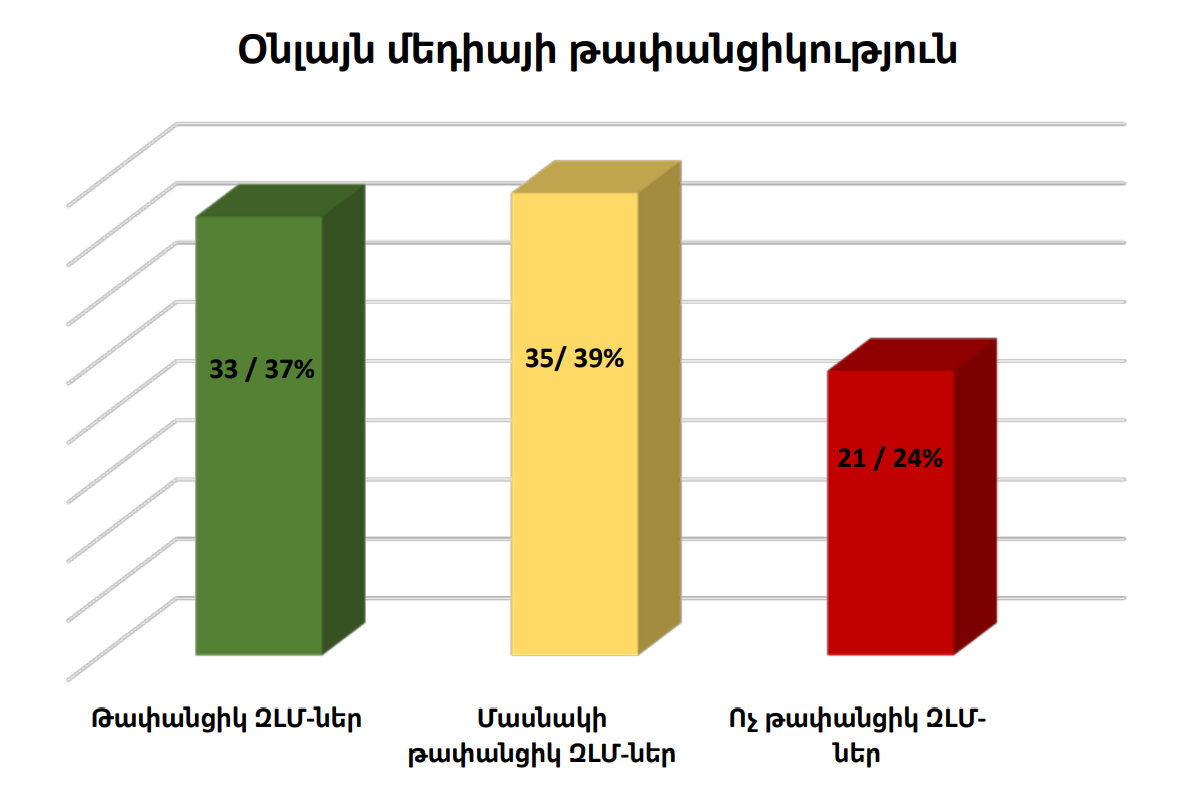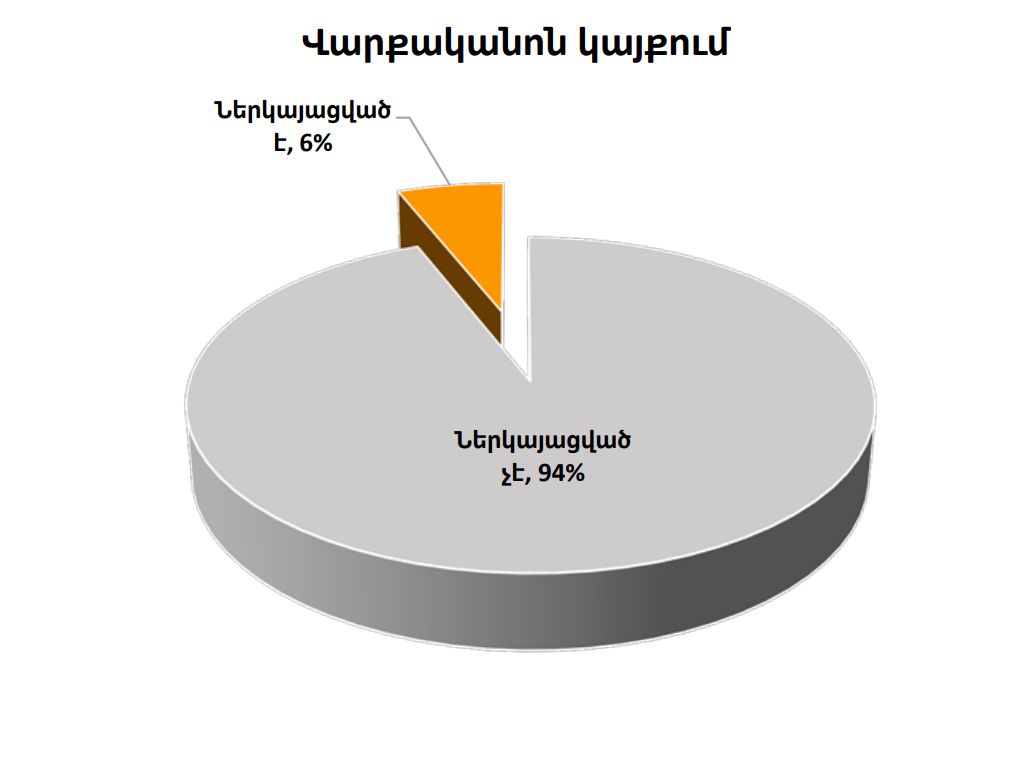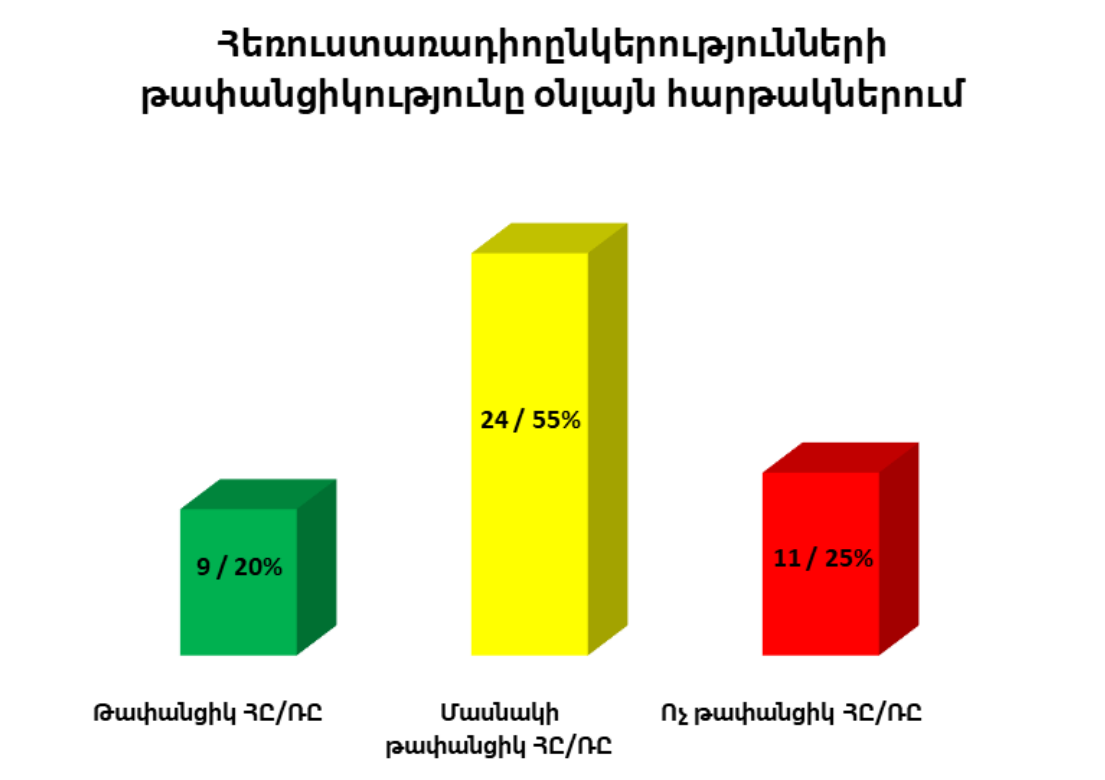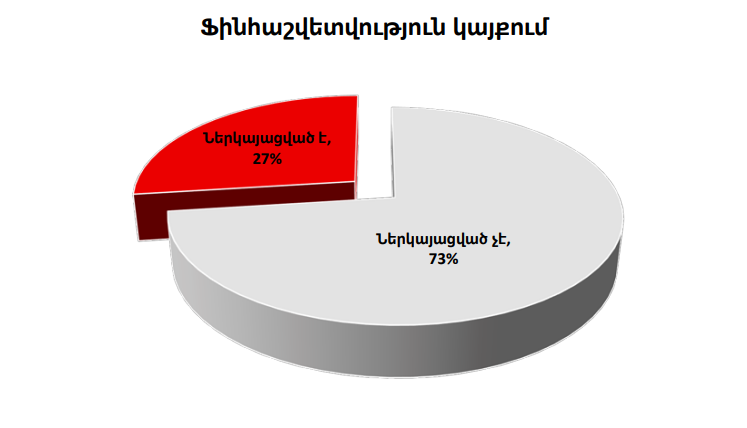
37% of online media and 20% of audio-visual media operating in Armenia are considered transparent. This data was collected by the “Region” research center in its “Armenian Media Transparency – 2021” research.
Noting the growing distrust and severely negative attitude towards the media in recent years, the Region Center has tried to find out the foundations for trust in the local media, such as transparency when presenting to the audience, access to output data, etc.
Օնլայն լրատվամիջոցներ

The availability of 7 source data was taken into account when researching 89 Armenian online media: The more data, the more transparent. Released data:
- year of foundation,
- editor/another manager,
- founding body/person,
- phone number,
- email,
- physical address,
- code of ethics.
According to the research, there are three absolutely transparent media outlets: Aravot.am, Hetq.am, Iravaban.net (100%), and absolutely non-transparent media, which do not present any output data, the websites 1or.am, Norutyunner.am, Yerevan-times.am (0%).
“Of course, we all know why these sites do not present themselves to the public, as their main goal is to spread misinformation and manipulative comments. It is impossible to work openly and present output data when working in this,” said Ashot Melikyan, Chairman of the Committee to Protect Freedom of Expression, during a discussion on the report organized by “Region.”
The most publicized issue is the email address, which is published by 89% of the media, the second is the phone numbers (83%), the third is the year of foundation (66%).

The smallest group consists of the editorial boards that present their internal corporate ethics codes and publicly announce that they have such rules. This is a group consisting of only 5 media outlets (Aravot.am, Hetq.am, Iravaban.net, Lragir.am, B24.am – 6%).
“People often ask in the comments of media publications, ‘who owns this website?’ After such cases, I opened the article myself and saw that there was no information about the author of the article or the owner of the website. And we are talking about websites that do not forget to protect their property and copyright under the website, who go out of their way to write the terms of use of their materials, for example, copy only with the permission of the editorial office. But who is the editor, where are they, how can one contact them?” said the director of “Region” Laura Baghdasaryan.
Տեսալսողական լրատվամիջոցներ

Of the 41 national and local/regional TV and radio companies surveyed, only 9 are transparent (20%), with the majority being partially transparent (55%).
8 criteria were used for audiovisual media: 7 criteria of online media and another on the data on financial flows.
The research found that among local TV and radio companies, the only absolutely transparent one is Shoghakat TV (100%), and the completely non-transparent one is Free News (0%).
The law on audiovisual media adopted in 2020 does not define the rules for operating online and presenting to the audience of TV and radio companies. Despite that, the products of these companies are also widely consumed on the Internet.

In a less-publicized data group, there is information about the governing bodies of the audiovisual media. 77% of audiovisual media do not inform on their online platforms who the executive director/editor-in-chief of the given media is. 61% of them do not announce the names of the founding structures/individuals in online domains.
Referring to the reliability of the data presented by the media, Ashot Melikyan expressed doubts. “When you write to one of their email addresses, there is no response, which means that they are either formal, just to post something, or those media outlets do not consider it necessary to answer their audience’s questions. There have been cases when they did not answer their landline numbers at all.”
“Online media continue to only publish the data they deem necessary instead of all the data subject to mandatory publicity on their official platforms.”
The “Region” center is conducting the research of online media for the second time (in the case of audio-visual media, the first). The number of media outlets in last year’s list was 60. Although the lack of standard data for 89 media outlets this year has also been checked on social media (some media outlets present some data on social media but not on the web), the image above on media transparency repeats the priorities of last year’s survey.
Christian Ginosyan


Add new comment
Comments by Media.am readers become public after moderation. We urge our readers not to leave anonymous comments. It’s always nice to know with whom one is speaking.
We do not publish comments that contain profanities, non-normative lexicon, personal attacks or threats. We do not publish comments that spread hate.